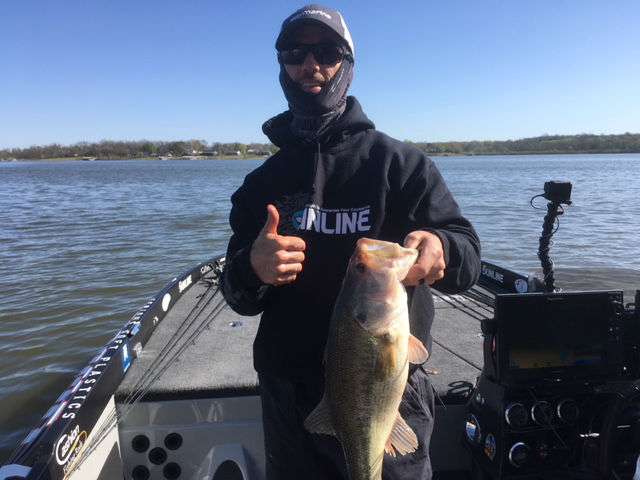
Fishing conditions change quickly, and so does the bite. That’s why you hear so much about certain baits being versatile. You don’t have to retie or own several rod and reel combos to make multiple presentations. All you have to do is change the way you fish them.
That’s why I’m a big fan of worms. I even started, and own, a soft plastics company called Missile Baits because I saw the potential of plastics, especially worms. These baits come in every size and configuration imaginable, as well as countless colors. And, they’ll catch bass under almost any conditions and at any time of the year.
Here are some of my favorite techniques with brief descriptions of each. If you want more details, search this site. It’ll give you everything you need.
The Texas Rig
All you need is a bullet weight, a good offset worm hook and a soft plastic worm. Peg your sinker when you’re fishing heavy cover. Don’t peg it when you’re in open water or sparse cover.
You can keep a Texas rigged worm from twisting your line by making sure you rig it straight on the hook. The easiest way to do this is to run the hook point in the head along a seam — there’ll be one on each side — and then stick the hook back in along the same seam. It’ll also fall more naturally that way.
The wacky rig
Hook your worm through the egg sack to get a quivering effect on the fall and to make it collapse and straighten back out when you pull it along. Either, or both, can be deadly.
Everybody has a favorite hook for this. I go with a Gamakatsu Octopus Light Hook in various sizes, and I almost always fish a wacky rigged worm on light tackle. My favorite setup is a Cashion spinning rod along with 8- or 10-pound-test Sunline fluorocarbon line.
Weighted hooks work well, too, if you want to get your worm down into deeper water. However, you can get the same effect with a nail weight.
The Carolina Rig
This is a tried-and-true fish catcher, but for reasons that escape me has been largely forgotten in recent years. It’s especially deadly in lakes with little cover and that have rocky, sandy or hard bottoms. It can be super good in grass, too.
Vary your leader and your weight until you figure out what’s working best on the day you’re fishing. I use 10- to 14-pound-test fluorocarbon line for my leader that’ll be anywhere between 24 and 36 inches long most of the time. I like weights anywhere between 3/8 of an ounce on up to a full ounce depending upon the depth I’m fishing. I use SPRO swivels to avoid line twist.
The Neko rig
This one’s similar to a wacky rig, but different. You place the hook though at the egg sack but also put a nail weight straight into the tail so that your worm drops straight down with a faster fall. It gives the bass something different to look at and will often trigger strikes when nothing else is working.
My tackle choices are basically the same as with a wacky rig.
The drop shot
This has become a mainstay for a lot of anglers, and not just in deep, clear water.
There’s a ton of specialty tackle on the market for this rig. I fish a Cashion Drop Shot rig with braid for my main line and 6- or 8-pound-test fluorocarbon for my leader. Recently I’ve started lightening up on my weights, and it seems like I’m catching more bass and getting hung-up less.
The slider head
The slider head was made popular by Tennessee bass angler Charlie Brewer. It’s a light head that pulls a short — usually 4 inches long — straight tail worm horizontally through the water. It’s a serious finesse technique for when you can’t get a bite any other way, especially along shallow weed lines.
Use light spinning tackle for this approach. Light means something that’ll throw a 1/8-ounce head a country mile. Any fluorocarbon line above 8-pound-test is too heavy. And, make sure your drag is set correctly or that you know how to back-reel.
The swim rig
This rig is popular in Florida but will catch bass anywhere. All you do is rig a paddle or heavy tail action worm Texas style with a really light weight. Throw it out and bring it back horizontally. At times this technique will drive them crazy.
Make sure you go a little lighter with your hook, rod, reel and line. This isn’t a standard “drag along the bottom” Texas rig technique. It’s more like finesse swimbait fishing.

